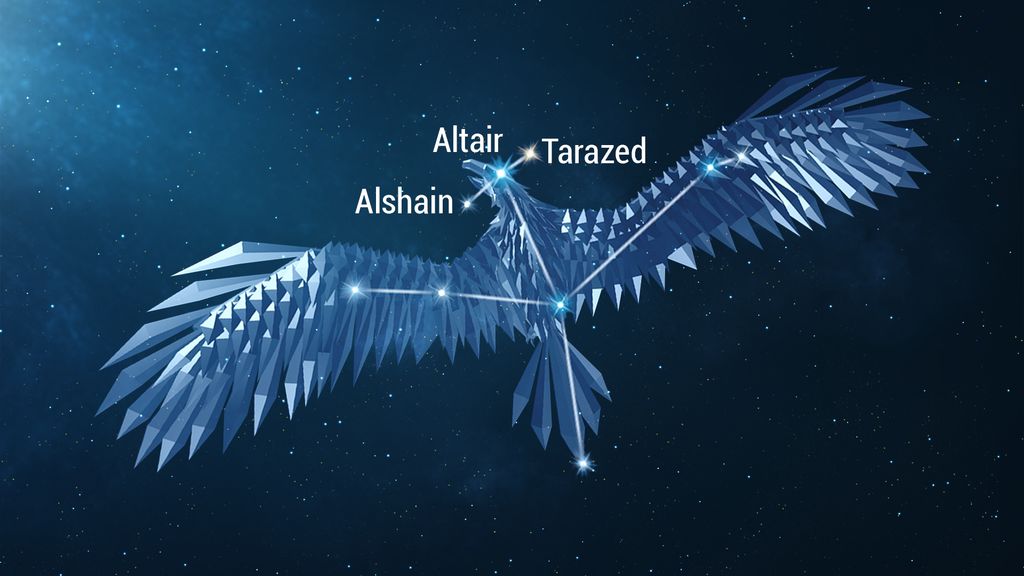
Look halfway up the southeastern sky in early August evenings, and you’ll easily spot the bright, white star Altair, sitting at the bottom corner of the Summer Triangle asterism. Altair is the brightest star in the venerable constellation of Aquila (the #Eagle) and marks the great bird’s head. The eagle’s body and tail extend downwards to the right, more or less following the Milky Way. The #wings extend upwards and downwards.
Altair is Arabic for “flying eagle”. The star itself is a yellow-white star about ten times larger than our Sun, and only a mere 17 light-years away, making it the twelfth brightest star in the night sky. At 10 hours, its rotation rate is one of the fastest known, spinning so rapidly that the star has an oblate shape (wider at the equator than it is tall). In the sky, Altair is symmetrically flanked by two small stars named Alshain and Tarazed. The trio span about three finger widths, or 5° of separation. Tarazed is a cool, orange giant star located 460 light-years away and shining at almost 3,000 times the luminosity of our Sun.
The rest of Aquila’s stars are dimmer, but nonetheless visible to unaided eyes. Almost a fist’s diameter to the lower right of Altair is the star Delta Aquilae, representing the body. The upper wing has the star Okab at the tip. The lower wing is formed by two widely spaced stars named Almizan I and Almizan II. The eagle’s tail is marked by a pair of small stars named Al Thalimain, “the two ostriches”.
In Greek mythology, the constellation had been associated with Aetos Dios – the eagle that carried the thunderbolts of the supreme god, Zeus. The eagle was also sent by Zeus to carry the shepherd boy Ganymede to Mount Olympus. Ganymede is often associated with the constellation of Aquarius.
There are no comments yet.